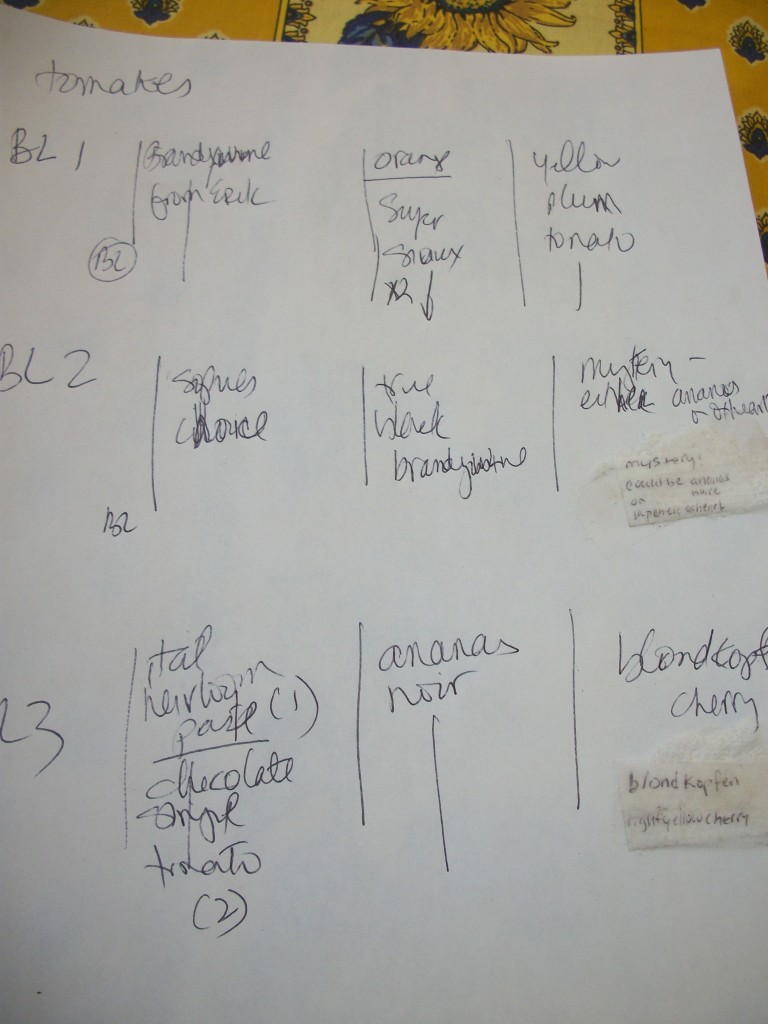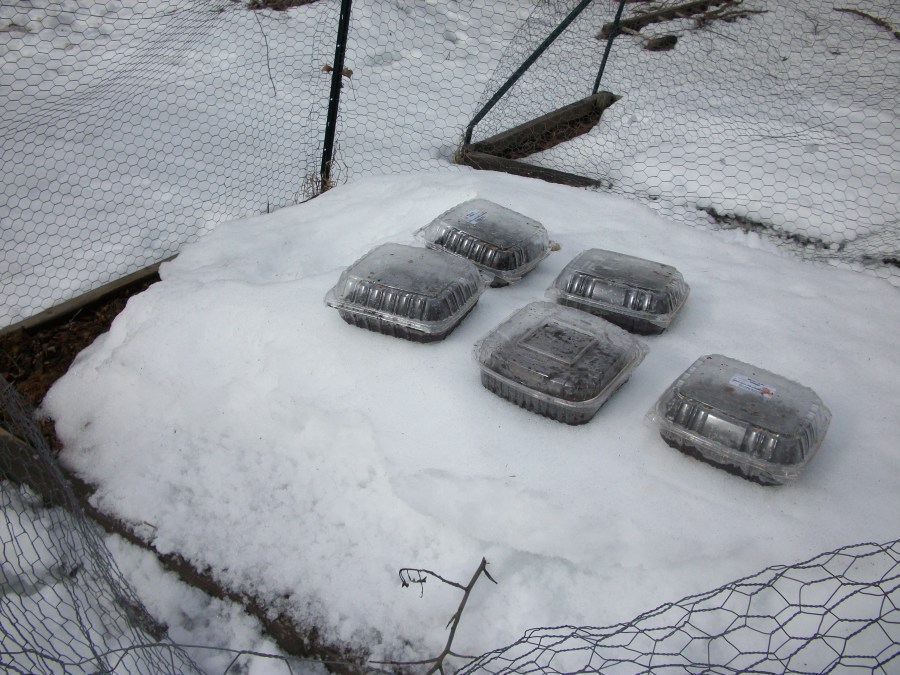Every year I vow that I will restrain myself with tomato plants. And I do — sort of — when it comes time to put them in a raised bed. But I am less restrained when it comes to starting seeds. After all, you never know what will germinate and what will flop, right? (And last year, the Brit pushed for using up all those Sungold seeds…) So I usually find myself foisting plants on colleagues and/or appropriating space in a neighbor’s bed.
This year could be at least as bad.
In the quest to use up many of the seeds we have so that I can justify those blue indigo tomatoes next year, I have planted 27 plugs, each with a few seeds because, hey, they’re old so will they all germinate? If they all do, I’ll end up with close to 100 plants — probably enough for the entire neighborhood! But that’s a problem for another day, to sort of borrow a phrase from Scarlett O’Hara. In the meantime, I think (hope?) I’ve found a good way to keep track of all of them at least until it’s time to transplant them into bigger containers.
The good part is that I did use up a lot of the seeds. And that if it all flops, it’s early enough that I can start another round. The bad part is that I still have quite a few, though the variety is much more manageable for that second round. I didn’t even touch the unopened pouch of black cherry tomatoes, which was a tough thing to do. And maybe I’ll find someone who’ll swap a Sungold or a Sunsugar (even sweeter) for one of mine.
Even if I can’t pull off that last part, I could have quite the colorful tomato salad, with nearly a dozen types of tomatoes. The assortment includes plenty of Brandywines (two different gifts of seeds), an orange variety, yellow plum, yellow cherry, a chocolate stripe and more.
And heck, if I’m going to get my fingers all dirty and start a heat mat, I might as well try some other seeds. So the last of a pack of miniscule alyssum seeds is planted, as is half a pack of white nicotiana that I hope will add a wonderful scent to the deck on a summer’s evening.
Next round: Basil? Salad greens?



